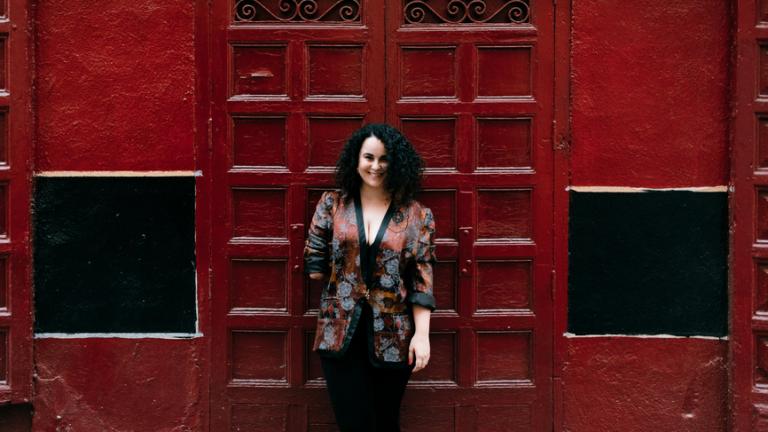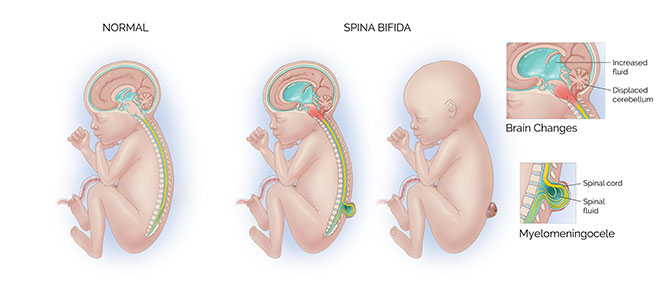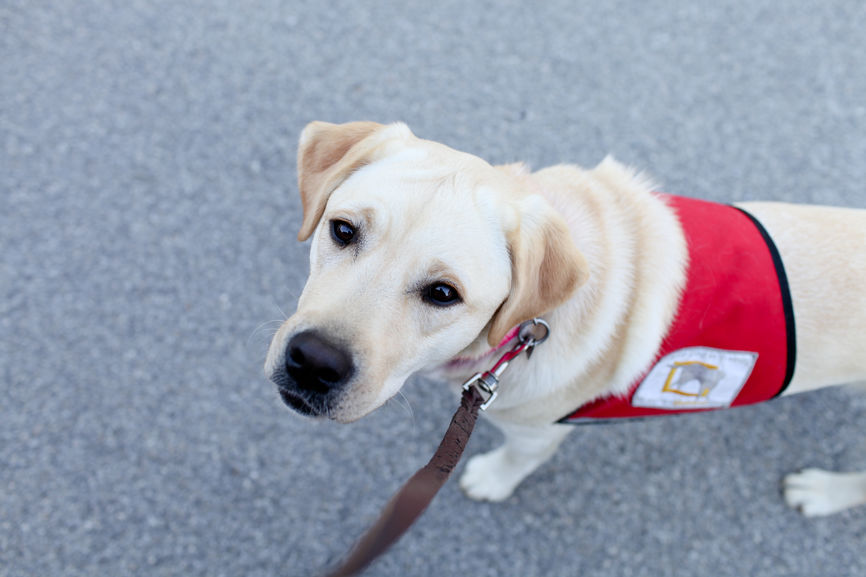“Repeat after me: newspaper, rose, hamburger”.
No response.
“Ms. Smith, repeat after me, newspaper, rose, hamburger”.
No response.
The clinician looked at 22-year-old me and said, “Ms. Smith has progressive Multiple Sclerosis – this is a very severe case.” This was my last day at my clinical placement, it was all too much for me to handle.
I was diagnosed with Multiple Sclerosis in 2012; I was 22 at the time. They were not sure what was wrong with me at first. I was a frail, 20-something college student, following a strict “vegan diet” to cover up underlying issues with food and chain smoking American Spirits – I was the poster child for malnourishment and ill health. But my symptoms had suddenly become much more serious than just poor general health. My symptoms consisted of going blind in my right eye when overheated, stressed, working out, eating soup, drinking coffee, sitting in fluorescent lights, smoking, drinking, sitting in class, putting on eyeliner – okay, I was basically blind all the time! For a long time though, I hid my symptoms. I would tell my friends, “It’s getting better!”
I went through a year of tests – spinal taps, blood work, MRIs, you name it. My mother has had Multiple Sclerosis since 1998 and with my family history and the nerve damage in my right eye, the doctors wanted to be thorough. One hospital discharged me and told me to take vitamins. After a year of multiple hospitals, cities, and doctors, I was diagnosed. Multiple Sclerosis, according to the National Multiple Sclerosis Society, is an unpredictable, often disabling disease of the central nervous system that disrupts the flow of information within the brain, and between the brain and the body. No, I wasn’t going to die – but it sure felt like that sometimes.
I was a Speech-Language Pathology undergraduate student at the time and my final placement was at a rehab center in Brooklyn. I could tell my professors were nervous about sending me there after hearing of my recent diagnosis, but I felt positive about the placement; after all, I had been living with my mother having this disabling disease my whole life. I even wrote in one of my papers that I wanted to work with adults with neurogenic disorders. At the time, I don’t think I realized how much this placement would affect me. One client I met had progressive Multiple Sclerosis, and her mind was gone. No responses. No eye contact. No “connection” to her verbal language. The clinician explained that they saw her decline and watched this disease take everything she had to offer. I was a good student. Straight A’s, always punctual, engaging and communicative. I stopped going. This was my final year of school, and I just gave up. It was too much. Luckily, Marymount Manhattan College has wonderful and empathetic professors who understood what I was going through and changed my placement to a preschool. I will forever be thankful for that.
Now that I’m in graduate school, I look back on those moments of weakness in the first months of my diagnosis. I am now, a completely different person. My Multiple Sclerosis has changed me, and for lack of a better term, for the better.
I left New York City in 2014 to move to Philadelphia. Philadelphia was closer to my parents and had cheaper rent. I had always an interest in nutrition, hence my vegan diet at such a young age, and I started learning how to take care of myself through nutrition. I started accepting that my condition was incurable, and I needed to handle it. I chose to stop taking my disease-modifying drugs, which left bruises all over my body, and manage this disease in a more holistic fashion. I kept up with my vegan diet, but incorporated more whole, plant based foods. I started juicing, eating raw foods, and exercising daily. Now, by no means, am I perfect at this point. This has been a journey and quite the process. In early 2015, I met my future husband, and we moved to Colorado a year later. Still eating whole foods and managing my Multiple Sclerosis naturally – I remained symptom free. I started my graduate degree in Speech Pathology, and my Multiple Sclerosis was nowhere to be found. I felt like I healed myself. I wrote a blog and gave diet and exercise advice to everyone who asked (and people who didn’t ask).
And then, in 2017, I forgot how to walk for the first time. After a year of a vigorous running schedule, graduate school and a miscarriage, my body said no more. My diet was good, but it wasn’t great. As cliché as this sounds, life happens. Things take the back burner – things that shouldn’t. At the time, I was off disease modifying drugs for 3 years with no symptoms. I became lax. I had too many glasses of wine some nights, and living back in Philadelphia, too many vegan cheesesteaks. Just when I thought I was done with this disease, I was right back where I had started – in that god awful tube for another MRI. My legs were weak and shaky and I had no feeling in the left side of my body. Once again, Multiple Sclerosis wasn’t going to kill me, but it sure felt like that.
I have a lot of flaws and a lot of things I do not like about myself. But there is one thing that I’m pretty amazing at: I don’t take no for an answer. Multiple Sclerosis has taught me that. I can barely walk? Nope, not happening. I took it to another level. I stopped running, even as much as I loved it; I felt that it was too much on my central nervous system. I started doing yoga instead – and practicing meditation. I stopped drinking – it didn’t do anything for my body. I began asking myself a question every day when waking up – what can I do for my body and my health today? What is the best for Monica? I continued eating a whole food, plant based diet and started eating 9-10 cups of raw leafy greens a day. I also began supplementing with vitamin D, which is great for people with Multiple Sclerosis.
When asked to tell my story I find myself thinking – well what part? Do you want to know about the 22-year-old that couldn’t handle her clinical placement due to an unfortunate diagnosis, who you could find on East 90th street chain-smoking? Do you want to know about my years of healing where I became a spokeswoman for healing multiple sclerosis and then miserably failed by losing my ability to walk? Do you want to know about my current diet and how I overcame failure? Ask me for my story in a year, and it will be longer. There will be more successes along with hardships. With or without an unfortunate diagnosis, life goes on. Our story lengthens as we grow as individuals.
Repeat after me, “hamburger, rose, newspaper.”
Today, I can repeat. And that’s all that matters.








